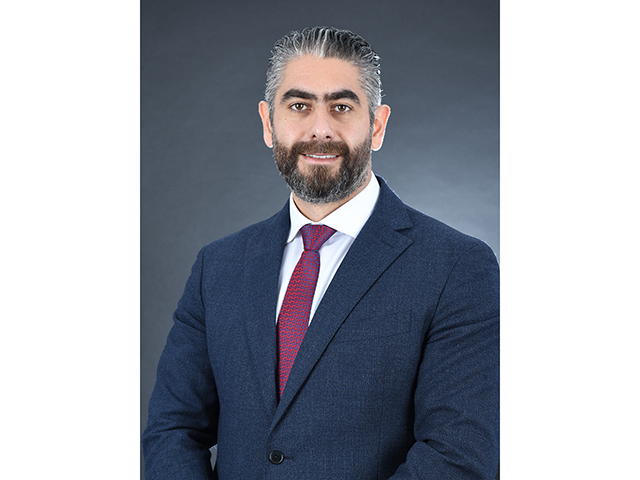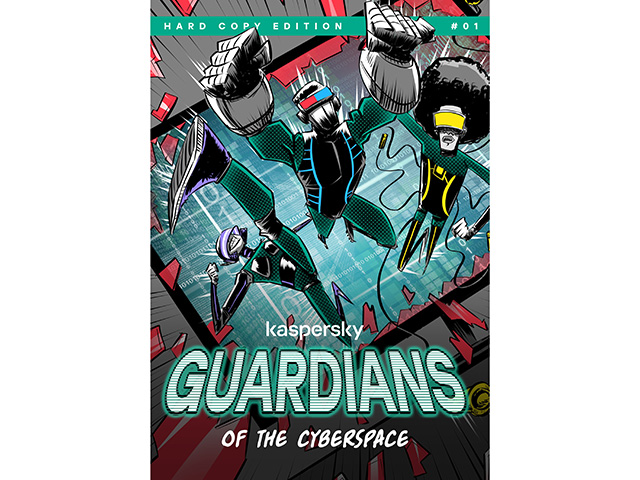Kaspersky enlists Guardians of the Cyberspace in the battle against cybercrime
By Ryan Noik 7 February 2022 | Categories: sponsored content
Even as the world has changed substantially in the past two years, one thing has remained constant – the need for vigilance and cybersecurity savvy amid a continuous expansion of cybercrime.
In many ways, cybersecurity threats are a grand equalizer, levelling the playing field by affecting large enterprises, small and medium businesses and individuals alike. Much like biological viruses, cyberthreats don’t discriminate, affecting whatever and whoever they can. The prevailing question becomes how to combat this threat that seemingly has no end? One of the answers lies in inculcating awareness on an ongoing basis.
Read your way to better security
With this in mind, Kaspersky recently launched its first Guardians of the Cyberspace graphic novel. This, explains Rashed Al-Momani, the head of enterprise in Africa and Turkey, is a great way to translate typically technical information into something that is entertaining and informative while being educational as well. The graphic novel is one more avenue, along with infographics and video content, that the company has endeavored to distill important information and make it more accessible to an audience.
The 25-page graphic novel is designed to be accessible to corporate users and consumers alike and highlights the need for expert security defences while still providing best practice examples of what not do in the event of an attack.
“Guardians of the Cyberspace is a perfect illustration of some of the things IT teams have to deal with and what decision-makers can do to transform their cybersecurity posture,” explains Al-Momani.
“While the graphic novel is a story, at its core, it also highlights how increasingly sophisticated the cybersecurity landscape has become, while shedding light on some of the tactics attackers rely on to compromise systems and promote cybersecurity best practices,” he elaborates. As well, it highlights the importance of leveraging expertise in security defenses. This has become particularly important over the past two years, as the normal ways of doing business were disrupted, and compelled companies to embrace having a remote workforce.
The villains are getting smarter
Al-Momani notes that during the pandemic, cyber criminals used the newfound time to improve their skills, and test out new cybercrime methods. With this came an increase in cybercrime of all kinds, from malware, to advanced persistent threats (APT), as well as ushering in new hacking groups armed with new kinds of attacks.
He adds that Kaspersky has witnessed an increase in the number of professional cybercrime gangs, with its researchers currently monitoring more than 200 cybercrime gangs, which have been launching targeted attacks against targets such as banks, governments, which of course, can also have an impact on users and consumers.
“For example, phishing and related malware campaigns, which have grown in popularity by threat actors, who are targeting people working outside of the relative safety of the office network. This means that every organization and consumer remain at risk for cyber attack,” he stresses.
Planning a solid defence
How then do organisations and individuals defend themselves? Al-Momani expands that there are three pillars that need to be established to mount a successful and strategic defense against sophisticated attacks.
These include equipping in-house experts with the tools to address incidents and be able to respond to them timeously; keeping abreast of the latest threat intelligence; and thirdly, being able to call on external experts to provide assessment, support, and back up.
Having the right cybersecurity technology in place is therefore only part of one’s defence. Cybersecurity is not only about using advanced solutions, but it is also about understanding how one’s environment must continually evolve to safeguard systems and data against threats that exploit any sign of weakness, stresses Al-Momani.
Staying cybersafe
Beyond the technology, a critical component of protection lies with the person using the device. ‘’This has given rise to the concept of the human firewall which combines security awareness – which is what the graphic novel is intended to strengthen - and training solutions to deliver a comprehensive way for organisations to protect all levels of their structure, regardless of where people are working from,’’ he continues.
After all, if an employee still clicks on a malicious email, submits sensitive data on a spoofed website, or inserts a suspicious USB drive into their computer, compromises will occur. That is where training comes in. For training to be optimally effective, it must be adapted to the skillset, knowledge, and responsibilities of individual employees. The content of the training must also reflect the current threat landscape and provide guidance on likely future scenarios.
“More than ever, cybersecurity skills are needed on both a basic and advanced level. All employees need to understand good cybersecurity hygiene. By visually highlighting some of the aspects surrounding this through the graphic novel, we aim to help create a stickiness to some of the key concepts that some general users might not have fully understood,” concludes Al-Momani.
For more insight into the three main threats companies need to beware of, and some best practice strategies into how employees and consumers can stay cybersafe, click on the extensive interview with Rashed Al-Mamani below. You can also download and read the Guardians of the Cyberspace graphic novel here.
Most Read Articles

Have Your Say
What new tech or developments are you most anticipating this year?




